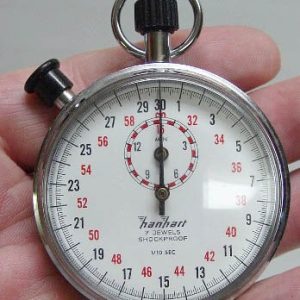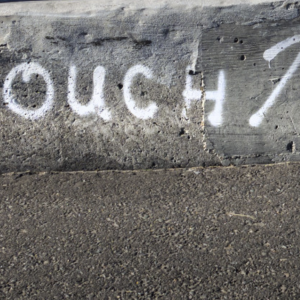Want to experience the greatest in board studying? Check out our interactive question bank podcast- the FIRST of its kind here: emrapidbombs.supercast.com
Author: Blake Briggs, MD
Peer Reviewer: Larry Mellick, MD
Introduction
Kawasaki Disease (also called mucocutaneous lymph node syndrome because board exams love to mess with you), is perhaps one of the most common vasculitides in children, especially those aged 6 months to 5 years old. It is extremely rare in adults. Despite traditional fears and teaching, the condition is usually self-limited.1 The hallmarks of fever and classic signs/symptoms last for about 2 weeks and do not require therapy in the majority of cases. Less commonly, severe complications like coronary artery aneurysms, depressed myocardial function with subsequent heart failure, MI, and arrhythmias can occur. This review will cover the presentation, diagnosis, and ED-initiated treatment of Kawasaki disease.
Presentation
Variations in symptoms and signs are what make Kawasaki a difficult diagnosis. Much of its presentation has overlap with other, much more common disease processes.
Patient age has the greatest impact on a patient’s likelihood of developing the various manifestations of mucocutaneous inflammation. Yes, that is a board stat you must know.
Oral mucus membrane findings = 90%
Polymorphous rash = 70-90%
Accelerate your learning with our EM Question Bank Podcast
- Rapid learning
- Interactive questions and answers
- new episodes every week
- Become a valuable supporter
Extremity changes = 50-85%
Ocular changes = >75%
Cervical LAD = 25-70%
If you are amazed with those wide ranges of percentages, you’re not alone.2,3 Even worse, all these findings are rarely present at the same time. There is no predictable order of appearance.
Fever: the most common, consistent sign of Kawasaki. It’s typically above 101 F. Any fever >5 days should trigger concern for Kawasaki disease.
Conjunctivitis: bilateral, nonexudative. It’s present in >90% of patients and usually happens within days of fever. It is a bright erythema that spares the limbus.
Mucositis: dry, cracked-appearing lips along with a bright red, “strawberry” tongue. Interesting, the “strawberry” pattern comes from inflammation and shedding of the glossal tissue, resulting in a bumpy appearance of the remaining papillae. Kawasaki does not cause oral ulcers, exudates, or tonsillar findings.4
Rash: the rash can really be whatever it wants. Classically, it is a macular, morbilliform rash of the extremities and trunk, often involving the palms and soles.
Extremity changes: focal edema in the hands and feet is unique to Kawasaki, but not a reliable finding. Later in the disease course you may have skin peeling of the distal extremities that begins in the periungual regions and expands to the rest of the hands and feet (periungual desquamation as the professionals call it, #fancy).5
Lymphadenopathy: the least common feature identified. When seen, it is most evident in the anterior cervical nodes (right over the sternocleidomastoid muscle).6Diffuse lymphadenopathy is not expected and suggest other disease processes.
Everything else: there are many other signs and symptoms which are not reliably seen but might be present with Kawasaki like diarrhea, irritability, vomiting, cough, and arthritis. Basically, these various “viral-like” manifestations are unfortunate as they fool many clinicians.
Diagnosis
The traditionally taught diagnostic criteria is below.7
Fever >5 days + at least 4 of the 5 following physical exam findings:
-bilateral conjunctival infection
-oral mucus membrane changes
-polymorphous rash
-extremity edema in the hands or feet or periungual desquamation
-cervical lymphadenopathy
If >4 criteria are met, treatment and echocardiography should begin immediately.
If 2-3 criteria are met, get labs (see below). If CRP >3 or ESR >40, then get the echo.
If <1 criterion is met, and the child is >6 months old with fever <7 days, have outpatient follow up.
If <1 criterion is met, but child is <6 months old with fever > 7 days, perform labs and echocardiography.
Here’s the kicker: ~40% of patients with Kawasaki will have a concurrent infection. Whether this infection is actually real or was initially a misdiagnosis we don’t know.
The above criteria were developed by the legend himself, Dr. Kawasaki. Unfortunately, these criteria are not 100% sensitive or specific, and when he published these guidelines it was prior to the knowledge of cardiac involvement and which patients need to be identified as higher risk for aneurysms. 10% of children who develop coronary artery aneurysms never meet criteria for Kawasaki.
“Incomplete Kawasaki” is any patient with less than 4 out of the 5 above criterion.
Labs to order: CBC, CMP, CRP, ESR, Urinalysis
Certain lab studies combined with the history and physical make the diagnosis. Given the level of systemic inflammation, you can expect serum CRP, ESR, and ferritin elevation, along with leukocytosis. Platelet numbers dramatically rise during the second week, sometimes >1,000,000/mm3.
Other labs that may be seen but are not very sensitive or specific include normocytic anemia, sterile pyuria, transaminitis, hyponatremia.
Management
Echocardiography should be urgently performed in all patients with suspected Kawasaki. This is to establish a reference for longitudinal follow up.
High dose aspirin is typically started in the ED at the discretion of the inpatient pediatric specialist. Pediatric cardiology should be consulted early on as well.
Infants are the most likely to have coronary artery aneurysms. This is partly due to their lack of complete diagnostic picture causing delayed presentations, and delay in treatment.
Treatment with IVIG within the first 10 days of illness reduces the occurrence of coronary artery aneurysms by 75%, and mortality by 90%! The diagnosis is difficult, but early diagnosis is possible and achievable. One retrospective study showed 16% of cases diagnosed after 10 days of illness. The biggest predictors of delayed diagnosis include age <6 months old and incomplete presentation.
Mortality is very low for Kawasaki, those who die are more likely to from myocardial infarction as opposed to aneurysm rupture. Recurrence of disease is low.
References
1. McCrindle BW, Rowley AH, Newburger JW, et al. Diagnosis, Treatment, and Long-Term Management of Kawasaki Disease: A Scientific Statement for Health Professionals From the American Heart Association. Circulation 2017; 135:e927.
2. Ozdemir H, Ciftçi E, Tapisiz A, et al. Clinical and epidemiological characteristics of children with Kawasaki disease in Turkey. J Trop Pediatr 2010; 56:260.
3. Fukushige J, Takahashi N, Ueda Y, Ueda K. Incidence and clinical features of incomplete Kawasaki disease. Acta Paediatr 1994; 83:1057.
4. Burns JC, Mason WH, Glode MP, et al. Clinical and epidemiologic characteristics of patients referred for evaluation of possible Kawasaki disease. United States Multicenter Kawasaki Disease Study Group. J Pediatr 1991; 118:680.
5. Wang S, Best BM, Burns JC. Periungual desquamation in patients with Kawasaki disease. Pediatr Infect Dis J 2009; 28:538.
6. April MM, Burns JC, Newburger JW, Healy GB. Kawasaki disease and cervical adenopathy. Arch Otolaryngol Head Neck Surg 1989; 115:512.
7. Burns JC, Glodé MP. Kawasaki syndrome. Lancet 2004; 364:533.




